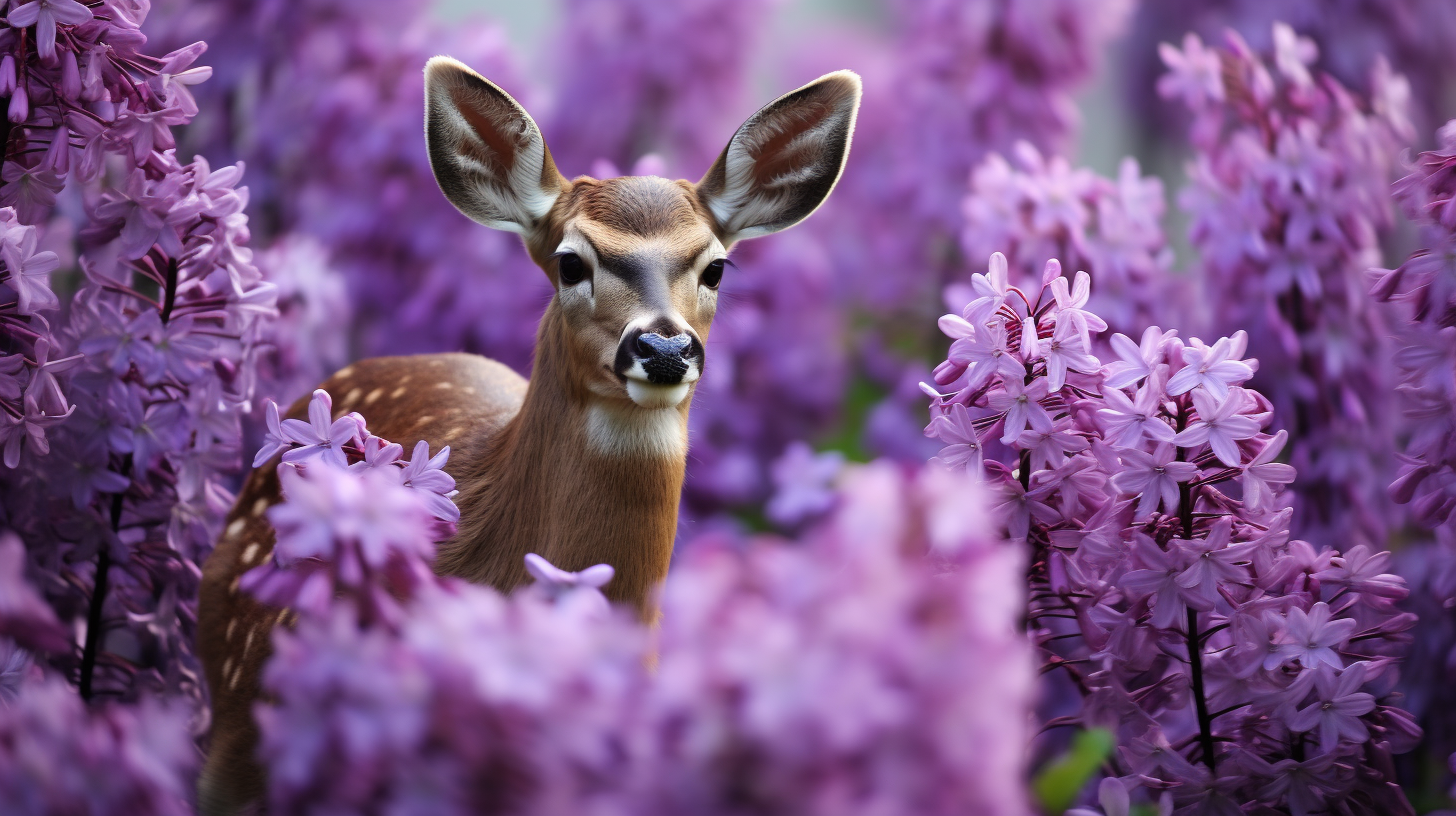Lilacs are beloved flowering plants known for their vibrant blossoms and delightful fragrance. If you have a garden or landscape adorned with lilacs, you might be wondering – do deer eat lilacs? In short, no, deer do not typically eat lilacs. However, it is essential to understand the feeding habits and preferences of deer to ensure the protection and longevity of your lilac plants.
Understanding Deer and Their Diet
Deer are herbivores, meaning they primarily consume plant matter. Their diet consists of a variety of leaves, twigs, grasses, and fruits. While they have preferences for certain plants, their eating habits can be influenced by factors such as food availability and seasonality. Deer are known to be opportunistic feeders, adapting their diets based on what is accessible to them.
Lilacs and Deer: The Connection
Lilacs, with their beautiful flowers and distinct fragrance, may not be the first choice on a deer’s menu. These plants contain compounds that deer find unappealing, making them less likely to consume lilacs. However, it is important to note that in times of scarce food supply or high deer populations, they may nibble on lilac leaves as a last resort.
To better understand the factors that can attract or deter deer from eating lilacs, it’s helpful to consider their behaviors and preferences. Creating a deer-resistant garden and implementing various strategies can be effective in safeguarding your precious lilac plants.
Do Deer Eat Lilacs?
While deer may avoid eating lilacs in general, there are instances where they may nibble on the leaves, especially during harsh winters when food sources are limited. Factors such as deer population density, availability of alternative food sources, and the presence of other attractive plants may influence their feeding behavior.
It is crucial to note that protecting your lilac plants from potential deer damage is advisable to maintain their beauty and longevity. Implementing effective deterrents, creating physical barriers, and utilizing natural repellents can help prevent deer from grazing on your beloved lilacs.
Let’s dive deeper into the strategies for protecting lilacs from being eaten by deer. But first, here’s a key takeaway summarizing the main points discussed:
| Key Takeaways |
|---|
| – Deer do not typically eat lilacs, but may nibble on them as a last resort |
| – Lilacs contain compounds that make them unappealing to deer |
| – Factors like population density and food availability can influence their feeding behavior |
| – Protecting lilacs from deer damage involves using deterrents and barriers |
Protecting Lilacs from Being Eaten by Deer
To protect your beautiful lilacs from potential deer damage, implementing effective strategies is crucial. Here are some methods and tips to help safeguard your plants:
1. Physical Barriers and Fencing
Installing fences around your lilac plants is a reliable way to keep deer away. Use sturdy materials, such as wire or mesh, and ensure the fence is tall enough to prevent deer from jumping over it. Additionally, you can create a physical barrier by wrapping individual lilacs with netting or burlap.
2. Deer-Resistant Plants
Integrating deer-resistant plants into your garden can reduce the likelihood of deer grazing on your lilacs. Some suitable options include lavender, Russian sage, yarrow, and daffodils. These plants have natural characteristics or strong scents that deter deer.
3. Natural Repellents
Using natural repellents can help keep deer at bay. Spraying a mixture of water and garlic or applying organic repellent sprays with ingredients like peppermint oil or blood meal can make your lilacs less appealing to deer. Remember to reapply these repellents periodically, especially after rain.
4. Companion Planting
Companion planting involves growing certain plants alongside your lilacs that repel deer. For example, planting marigolds, chives, or sage near your lilacs can create a deterrent effect. Additionally, surrounding your garden with plantings that deer find unpalatable, such as boxwoods or ferns, can create a barrier that discourages them from approaching.
By implementing these strategies and maintaining vigilance, you can protect your lilacs from being eaten by deer and enjoy their beauty for years to come. For more detailed information on deer-resistant planting and wildlife management, check out the following links: Keeping Deer Out of Your Garden: Effective Strategies for a Bountiful Oasis and Wildlife Management for Deer: A Comprehensive Guide.
Remember, prevention and proactive measures are the key to maintaining a thriving garden and coexisting peacefully with wildlife.
Hey there, fellow nature enthusiasts! I’m Mark Gray, the passionate owner of OutdoorAnimals.com, a hub dedicated to uncovering the incredible world of outdoor animals. Whether you’re a hiker, a four-wheeler, or just someone who revels in the beauty of the great outdoors, you’re in the right place. I seek to understand all varieties of animals, from the great elk to the simple mouse, my goal is to write and share this knowledge with the public.

